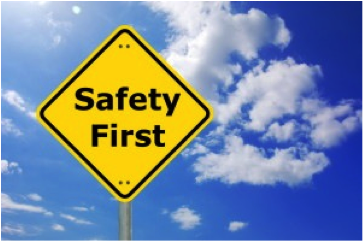We have plenty of patient safety articles to share with you this week. From advice for nurses on how to educate patients about opioid diversion to tips for preventing medical errors in long-term care, audiences across the health care spectrum will benefit from some weekend reading.
Continue reading “Weekly Must-Reads in Patient Safety and Health Care (November 6, 2015) – When False Alarms Pollute Intensive Care”
Category: Hospital Acquired Conditions
Weekly Must-Reads in Patient Safety and Health Care (October 23, 2015) – Two-Time Stroke Survivor Hopes to Teach Others About F.A.S.T.
This week’s must-reads feature articles about multiple patient safety touchpoints, from an inspiring article about Catherine Zalewski, a 33-year-old mother of two, former Mrs. New Jersey and certified personal trainer, and two-time stroke survivor who is raising awareness for World Stroke Day, to a new report that pharmacist intervention can help reduce readmissions through postdischarge outreach phone calls.
The theme of this week’s must-reads is that patient safety can and is being improved at multiple touchpoints.
Pressure Ulcers (Part 2): The Risks and Root Causes of Bedsores
By Thomas A. Sharon, R.N., M.P.H. (Nursing & Patient Safety Expert, Life Care Plan, Medical Evidence Analysis, Medical Record Review, Legal Nurse Consultant, Litigation Support)
Who is at Risk for Bedsores?
In making the assessment, your admitting nurse must determine whether anyone or more of the following risk factors exist:
Continue reading “Pressure Ulcers (Part 2): The Risks and Root Causes of Bedsores”
Pressure Ulcers (Part 1): Zero Tolerance for Bedsores
By Thomas A. Sharon, R.N., M.P.H. (Nursing & Patient Safety Expert, Life Care Plan, Medical Evidence Analysis, Medical Record Review, Legal Nurse Consultant, Litigation Support)
Bedsores (also called decubitus ulcers, pressure sores, or pressure ulcers) are the breakdown of skin resulting from excessive pressure that cuts off blood circulation. Friction burns also cause ulcerations when nursing personnel drag their patients on the sheets while pulling them up in bed. This subject deserves its own chapter because bedsores are one of the most common complications of hospitalization and exist in every hospital and nursing home. Continue reading “Pressure Ulcers (Part 1): Zero Tolerance for Bedsores”
Bed and/or Chair Rest + Neglect = Bedsores
Brian A. Raphan (Principal Attorney, Law Offices of Brian A. Raphan, P.C.)
Any time a patient is confined to a bed or chair for a period of time and not provided proper and adequate care, the risk of pressure ulcers increases.
The National Pressure Ulcer Advisory Panel (NPUAP) defines a pressure ulcer as a “localized injury to the skin and/or underlying tissue, usually over a bony prominence, as a result of pressure, or pressure in combination with shear.” Illustrations of the stages of pressure ulcers are shown below: Continue reading “Bed and/or Chair Rest + Neglect = Bedsores”
Weekly Must Reads in Patient Safety (March 20, 2015)
Three main issues in this week’s must reads.
… but, first, a parent’s plight with alarm fatigue – it doesn’t just affect caregivers. If you don’t believe that, then this first-hand account from the parent of a sick baby should change the mind of any doubters that alarm fatigue is real – 14 days of muting and ignoring alarms.
@kayvanwey Alarm fatigue is real – as a parent of baby in PICU for 14 days, I know it first hand!!
— Heather G. Anderson (@HRLawKnox) March 13, 2015
1. March is DVT/Blood Clot Awareness Month
Hats off to @ClotBuster and to @LiverWife for tweeting that March is DVT/Blood ClotAwareness Month! Continue reading “Weekly Must Reads in Patient Safety (March 20, 2015)”
Three Steps to Limiting Liability to Facility-Acquired Pressure Ulcers
The Risk Management Quarterly, the peer-reviewed journal for The Association for Healthcare Risk Management recently published in its Risk Management Quarterly Journal-Volume I 2015 Edition the article by Scott Buchholz, Esq. (Dummit, Buchholz & Trapp) and Michael Wong, JD, (executive director, Physician-Patient Alliance for Health & Safety) three practical tips for healthcare facilities to improve patient safety (i.e. follow protocols) and increase patient satisfaction (i.e. communicate effectively with patients).
To read the article in its entirety, please RMQ Article-Buchholz & Wong.
Weekly Must Reads in Patient Safety (Jan 9, 2015)
The Physician-Patient Alliance for Health & Safety wishes you and your loved ones a Happy and SAFE New Year!
We particularly emphasize SAFE, because the latest news on patient safety shows that there is a lot work yet to be done … or perhaps we haven’t started? … Continue reading “Weekly Must Reads in Patient Safety (Jan 9, 2015)”
Minimizing Exposure to Medical Malpractice Litigation
The Physician-Patient Alliance for Health & Safety presented at the American Conference Institute’s Medical Professional Liability conference on October 31, 2014 on steps hospitals can take to implement preventative measures to minimize their exposure to medical malpractice litigation.
According to a study that appeared in the Journal of the American Medical Association (JAMA), after heart disease and cancer, medical negligence is the third leading cause of death in the U.S. Continue reading “Minimizing Exposure to Medical Malpractice Litigation”
Weekly Must Reads in Patient Safety (Sep 19, 2014)
As you may be tired of reading about the death of Joan Rivers, we thought that we’d highlight some important practice recommendations instead …
… and then just one article on Joan Rivers. Not only is the article in Gastroenterology & Endoscopy News, but Kenneth P. Rothfield, MD, MBA (chairman of the Department of Anesthesiology at Saint Agnes Hospital) is quoted in this article. Dr Rothfield is on our board of advisors, so we must confess that we are biased towards his passion and commitment to patient safety. Continue reading “Weekly Must Reads in Patient Safety (Sep 19, 2014)”
